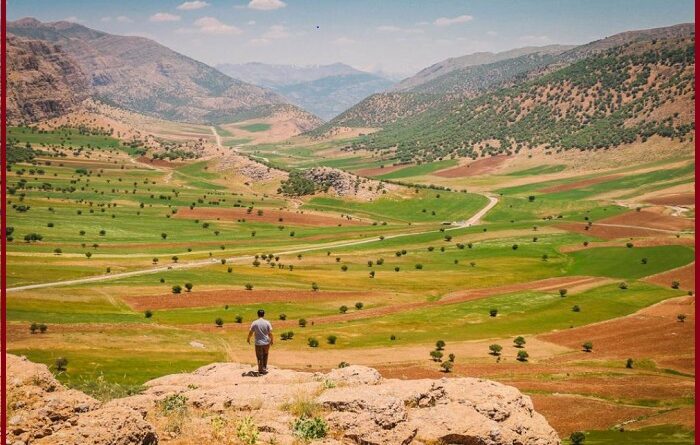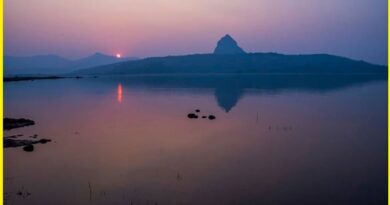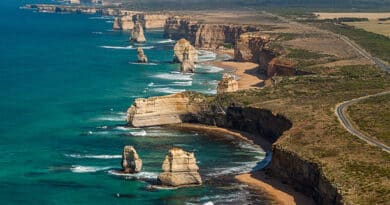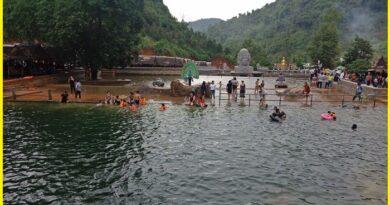An Iranian Wonder in the Zagros Mountains-Lorestan Province
Lorestan Province Iran
Lorestan Province is a historic province of western Iran, amidst the Zagros Mountains. With striking mountains, numerous canyons, and dozen of waterfalls, Lorestan is simply a wonderland in Iran. Covered with wheat fields and dotted with oak trees, Lorestan Province is sure a must-visit location in Iran. The major cities in this province are Khorramabad, Borujerd, Dorud, Aligudarz, Kuhdasht, Azna, Aleshtar, Nurabad, and Pol-e Dokhtar. Hiking and Camping is the best way to explore this Mountainous region.
History and Geography
The name Lorestan means “land of the Lurs”. The Lurs constitute part of the Southwestern branch of the Iranian people and part of the Indo-Iranian linguistic group, spread across the Iranian plateau. Its stretches from the Hindu Kush to central Anatolia and from Central Asia to the Persian Gulf – a region that is sometimes termed Greater Iran. The ancient history of Lorestan has closely associated with the 3rd and 4th millennia BC, migrant tribes settled down in the mountainous area of the Zagros Mountains.
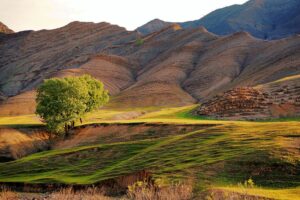
The terrain consists chiefly of mountains, with numerous ranges, part of the Zagros chain. The central range has many summits covered with snow, and sources of the headwaters of Iran’s most important rivers, such as the Zayandeh rud, Jarahi, Karun, Dix, Abi, and Karkheh. Between the higher ranges lie many fertile plains and low hilly, well-watered districts. The highest point of the province is Oshtoran Kooh peak at 4,050 m. The southernmost sector of the province, is low-lying areas, approximately 500 m above sea level.
Lorestan weather
The climate is generally sub-humid continental with winter precipitation. Because it lies on the westernmost slopes of the Zagros Mountains, annual precipitation in Lorestan is among the highest anywhere in Iran south of the Alborz Mountains. Temperatures vary widely with the seasons and between day and night. At Khorramabad, summer temperatures typically range from a minimum of 12 °C to a hot maximum of 32 °C. In winter, they range from a minimum of -2 °C to a chilly maximum of 8 °C. See the Lorestan province map for details.
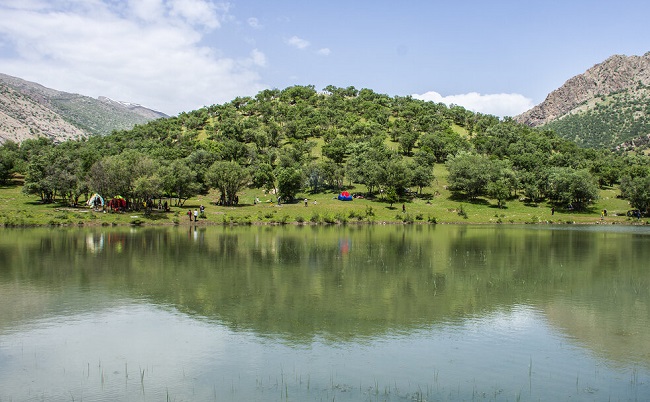
Tourist Attraction
According to Iran’s Cultural Heritage Organization Lorestan has 263 sites of historical and cultural significance. Some of the most popular tourist attractions are the 6th Century Inscription in Khorramabad, Falak-ol-Aflak Castle, Sassanid Kashgan Bridge in Koohdasht, Khorramabad Tower, Imamzadeh Ja’far in Borujerd, Pariz Kooh Mountain Dorood, Gahar Lake in Dorood, Kiyou Lake, Khorramabad, Oshtoran Kooh Mountain in Dorood, Bisheh Waterfall Dorud.
Also, read- The Only Karst cave with a railway line-Postojna Caves
Places to visit in Lorestan
Khorram Abad
Falak-ol-Aflak Castle
The main attraction of Lorestan is a Sasanid fort standing in the center of Khorramabad for over 1800 years. Falak-ol-Aflak has recently been converted into a museum with Lorestani culture and traditions along with historic items belonging to the first settlements in the region. Some of the most precious historic items from this region are the Lurestan bronze artwork usually dating back to 1000 to 650 BC currently on display in museums all around the world.
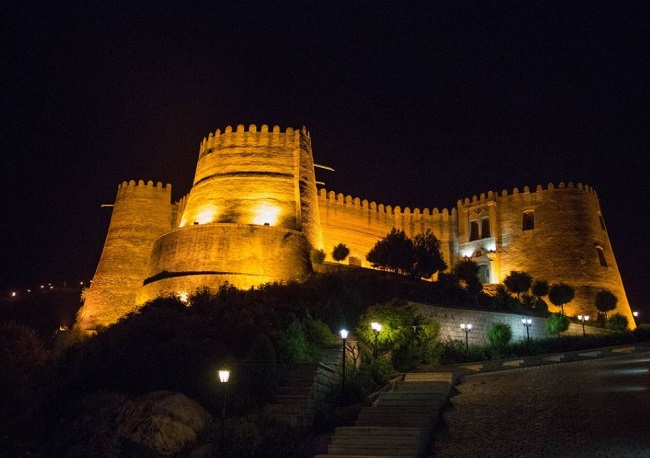
Makhmal Kooh
Makhmal Kooh is a mountainous region with beautiful greenery and waterfalls that is perfect for hiking.
Brick Minaret
One can see the famous brick minaret in the city center on your way to Falak-of-Aflak castle which was used to guide caravans in the dark.
Broken bridge (Shapuri bridge)
Lorestan has many brick and stone bridges and the stone Broken bridge is the most famous one. Built by Shapur I Sasanid around the same time as Falak-ol-Aflak castle, there are 6 arches remaining from this 28-arch bridge constructed to give way to caravans from Susa to Ecbatana.
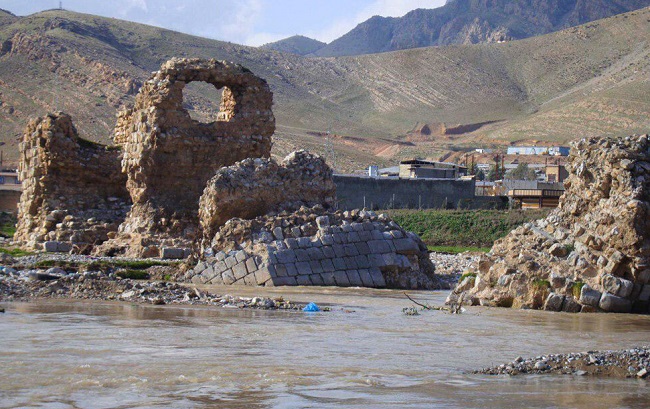
Bisheh waterfall
Bisheh waterfall is probably the most famous and easiest to access in all of Lorestan, It’s absolutely stunning. some other waterfalls that are located in the Lorestan are Gerit waterfall, the Nozhian waterfall, Vark waterfall, Keeyow lake
Dorud
Gahar Lake: Located on the sloped of Oshtoran Kooh, Gahar is a beautiful lake with turquoise blue water and stunning scenery. The best way to reach the lake is to first get to Cheshmeh Khorram and then hike for 3-4 hours to the lake. Visitors can camp for at least one night beside the lake which is a whole feast of its own. Espar waterfall, Leili canyon, and a hike to Oshtoran Kooh is the best attraction when you’re visiting Dorud.
Kuhdasht
Shirez canyon
Shirez canyon hike is the ultimate experience in Lorestan. The canyon is massive and unbelievably stunning. We had to make stops every once in a while to take in all the beauty surrounding us. Tourists are advised to come here early in the morning to avoid crowds on weekends or the sun hitting on top of their heads. The hike is not simple and most people hike up to Pol-e Khoda which is basically a beautiful cave.
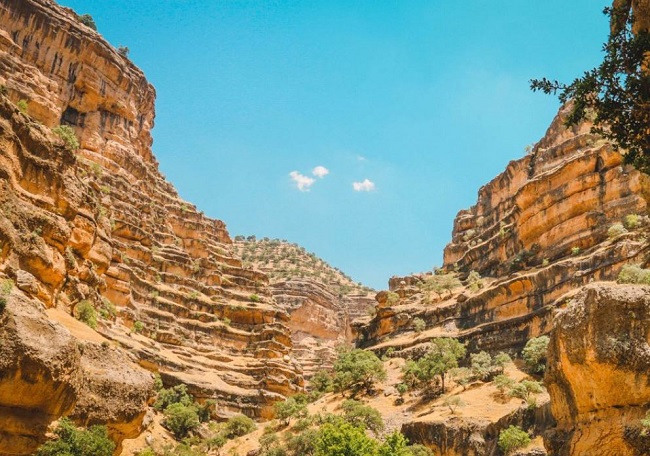
Best time to visit Lorestan Province
Visitors can see Lorestan in full bloom and luscious greenery, from late October to early January or from April to mid-May. Lorestan valley is extremely hot and dry but a trip to involves a lot of getting wet is the best option to visit the place. This can happen with waterfalls, brooks, and meandering rivers that are found in the region. Hiking through canyons also involved a lot of river crossing which soothed the heat. There is plenty of option to stay in and Hike around the place.
How to get to Lorestan Province
Flights from Tehran to Khorramabad run frequently that depart in the morning or around noon depending on the day. There’s also a train from Tehran to Dorud, this train ride is also known to be one the most scenic in Iran, and in Dorud one can easily get a guide to see the Lorestan province.
